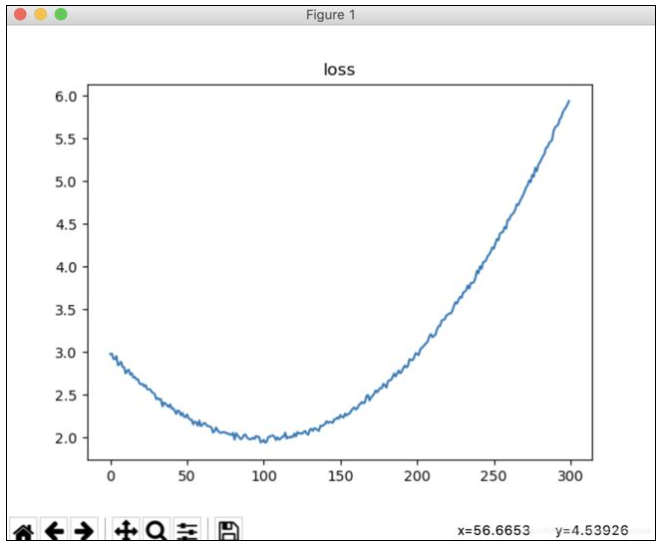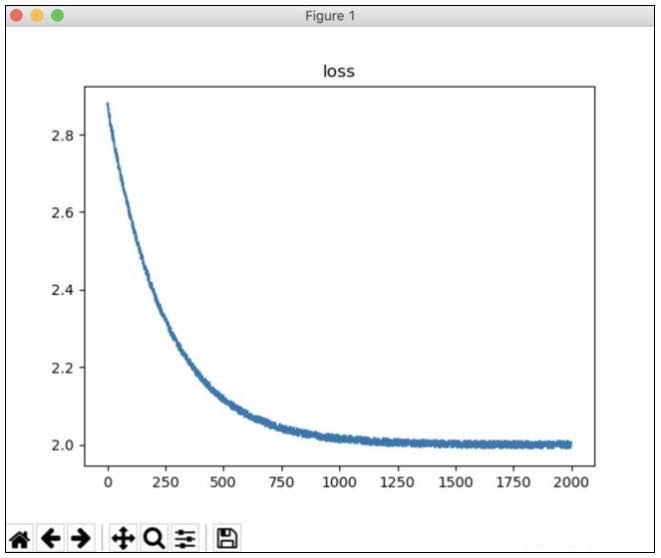
有的小伙伴不会解决numpy梯度下降最小值的问题,今天小编就来带大家一起看看吧。
问题描述:求解y1 = xx -2 x +3 + 0.01*(-1到1的随机值) 与 y2 = 0 的最小距离点(x,y)
给定x范围(0,3)
不使用学习框架,手动编写梯度下降公式求解,提示:x = x – alp*(y1-y2)导数(alp为学习率)
函数图像为:

代码内容:
<p style="line-height: 1.75em"><span style="font-size: 14px">import numpy as np
import matplotlib.pyplot as plt
def get_loss(x):
c,r = x.shape
loss = (x**2 - 2*x + 3) + (0.01*(2*np.random.rand(c,r)-1))
return(loss)
x = np.arange(0,3,0.01).reshape(-1,1)
"""plt.title("loss")
plt.plot(get_loss(np.array(x)))
plt.show()"""
def get_grad(x):
grad = 2 * x -2
return(grad)
np.random.seed(31415)
x_ = np.random.rand(1)*3
x_s = []
alp = 0.001
print("X0",x_)
for e in range(2000):
x_ = x_ - alp*(get_grad(x_))
x_s.append(x_)
if(e%100 == 0):
print(e,"steps,x_ = ",x_)
plt.title("loss")
plt.plot(get_loss(np.array(x_s)))
plt.show()<br /></span></p>
运行结果:
<p style="line-height: 1.75em"><span style="font-size: 14px">X0 [1.93745582] 0 steps,x_ = [1.93558091] 100 steps,x_ = [1.76583547] 200 steps,x_ = [1.6268875] 300 steps,x_ = [1.51314929] 400 steps,x_ = [1.42004698] 500 steps,x_ = [1.34383651] 600 steps,x_ = [1.28145316] 700 steps,x_ = [1.23038821] 800 steps,x_ = [1.18858814] 900 steps,x_ = [1.15437199] 1000 steps,x_ = [1.12636379] 1100 steps,x_ = [1.1034372] 1200 steps,x_ = [1.08467026] 1300 steps,x_ = [1.06930826] 1400 steps,x_ = [1.05673344] 1500 steps,x_ = [1.04644011] 1600 steps,x_ = [1.03801434] 1700 steps,x_ = [1.03111727] 1800 steps,x_ = [1.02547157] 1900 steps,x_ = [1.02085018]<br /></span></p>
图片

今天的numpy解决梯度下降最小值的讲解到这里就结束了。更多Python学习推荐:Python学习网教学中心。 (推荐操作系统:windows7系统、Python 3.9.1,DELL G3电脑。)
神龙|纯净稳定代理IP免费测试>>>>>>>>天启|企业级代理IP免费测试>>>>>>>>IPIPGO|全球住宅代理IP免费测试





